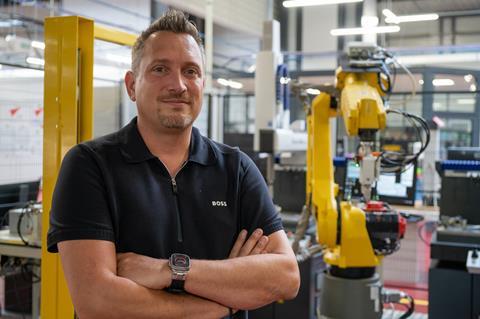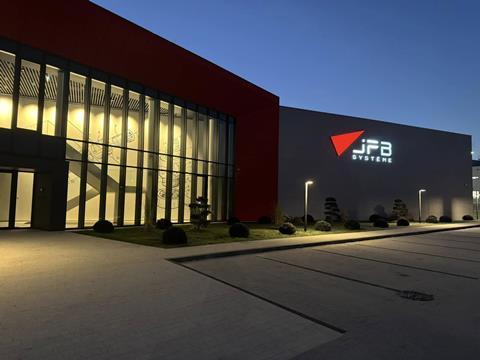The saying “from tiny acorns oak trees grow” certainly applies to JPB Systeme, an aerospace supplier based near Paris that makes a range of proprietary, vibration-proof self-locking devices for engines and other components, and is celebrating its 30th anniversary at the show.

In JPB’s case, the acorn was a concept devised by the company’s founder Jean-Pierre Marc after being challenged by what was then Snecma (now Safran Aircraft Engines) at the 1995 Paris air show to design a borescope plug without the need for lock-wire.
It led to Marc and the founder of the company he then worked for setting up a tiny business to develop and manufacture their product for Snecma.
And, while JPB may not yet be a towering tree in the global aerospace forest, it has become a significant mid-sized player, with more than 200 employees in factories in France and Poland, revenues of $45 million, and 19 patented products in its range. Its customers include all the major engine manufacturers – GE Aerospace, MTU, Pratt & Whitney, Rolls-Royce and Safran.
“Our products are unique, lighter than the competition and less expensive,” maintains Damien Marc, Jean-Pierre’s son, who today runs the company. “Despite all the ramp up and supply chain problems in recent year, we have delivered our products 100% on-time and with zero defects for 15 years. We’ve won awards from Safran and [Pratt & Whitney parent] RTX, and GE has named us a role model supplier.”
JPB opened its first overseas plant last year, at Rzeszow airport in Poland’s ‘Aviation Valley’, home to more than a dozen major aerospace names including JPB’s neighbours MTU and RTX. Later this year JPB will inaugurate a new factory next to and four times the size of its current site next to Safran Aircraft Engines in Villaroche, France. Both operations, says Marc, are “fully robotized”.
JPB’s history has been tinged with tragedy. Just nine years after founding the business – and three years after his borescope lock system finally entered service on the CFM International CFM56 – Jean-Pierre Marc fell ill with heart problems. Damien, who had recently graduated with a degree in electronic and computer engineering, joined JPB to help take the reins “in an emergency”. Three months later his father passed away.
Shortly after, Jean-Pierre’s business partner Bernard – the B in JPB – was keen to sell and identified a potential buyer for the business. “Instead, I said I would buy it,” recalls Damien Marc. “I was just 24 and had to raise €1 million ($109 million) from the bank to buy Bernard’s 51% share – my father’s share had come to me and the rest of my family.”
That began a transformation of the company. While Damien Marc was not an aerospace engineer, he realized JPB had highly valuable experience and intellectual property that could be expanded into other products, while his expertise in electronics and computing made him an enthusiast for the digital technologies that were beginning to transform industrial assembly lines and usher in predictive maintenance techniques.
He also concluded that JBP – which at the time in 2009 had just three employees and its next-door neighbour as its single customer – needed to broaden its client base. “It made us very vulnerable, so I did two things: I hired a mechanical engineer and gave him a blank sheet of paper to come up with new ideas, and I put on my backpack and knocked on the doors of GE and Pratt & Whitney.”
JPB is at the show exhibiting its latest line – a patented “smart” washer that an app on a phone will confirm has been properly fitted or not. As well as potentially saving “hours of maintenance” the product could also open new markets for JPB, in the oil and gas and amusement park sectors, says Marc. It already has an unnamed aerospace customer and is likely to fly on an application this year or next.

In 2023, the company won funding from the government’s €54 billion France 2030 innovation initative that helped JPB invest in production monitoring software and metal binder jetting 3D printing technologies. Marc is also keen to diversify further into aircraft components other than engines, such as wheels, brakes, and landing gear.
He expects existing production contracts to fill roughly half the new Villaroche factory, with the other half – as well as the soon to be vacated current building – available for organic expansion or the addition of a business acquisition. “We need the flexibility,” says Marc. “With the expansion of European defence budgets, we have lots of potential for growth. There are lots of people that want to work with us.”


























